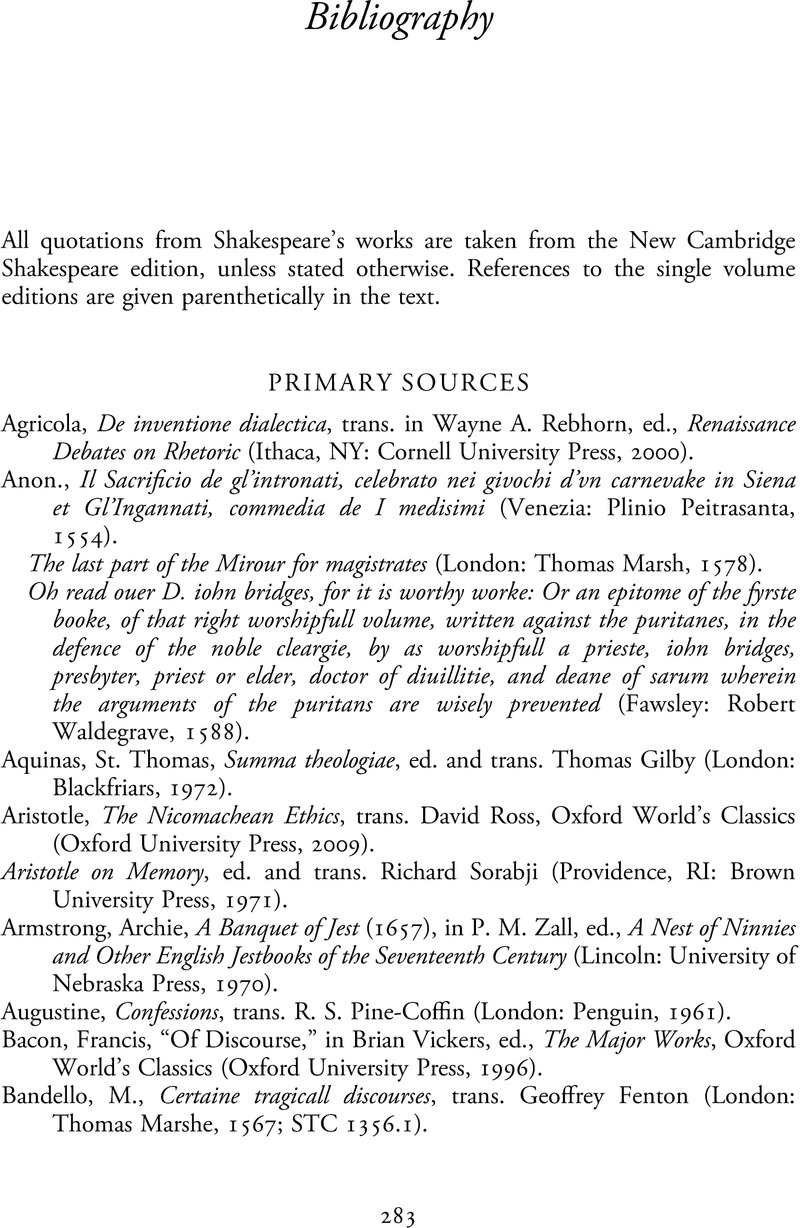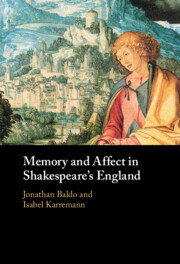Book contents
- Memory and Affect in Shakespeare’s England
- Memory and Affect in Shakespeare’s England
- Copyright page
- Contents
- Figures
- Contributors
- Acknowledgments
- Introduction
- Part I Ars memoriae, ars amatoria
- Part II The Politics of Memory and Affect
- Part III Affective Memory
- Part IV Memory, Affect, and Stagecraft
- Coda
- Bibliography
- Index
- References
Bibliography
Published online by Cambridge University Press: 07 June 2023
- Memory and Affect in Shakespeare’s England
- Memory and Affect in Shakespeare’s England
- Copyright page
- Contents
- Figures
- Contributors
- Acknowledgments
- Introduction
- Part I Ars memoriae, ars amatoria
- Part II The Politics of Memory and Affect
- Part III Affective Memory
- Part IV Memory, Affect, and Stagecraft
- Coda
- Bibliography
- Index
- References
Summary

- Type
- Chapter
- Information
- Memory and Affect in Shakespeare's England , pp. 283 - 307Publisher: Cambridge University PressPrint publication year: 2023

